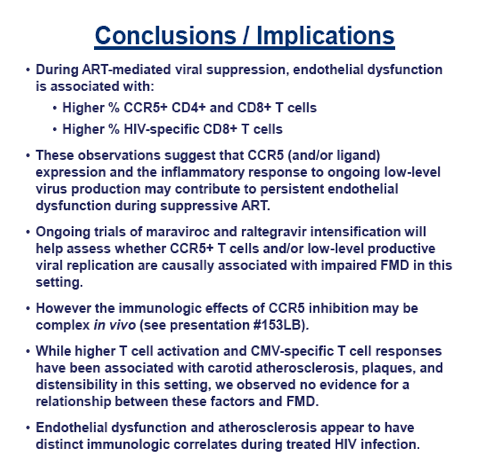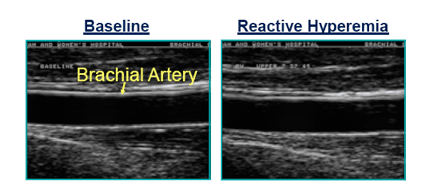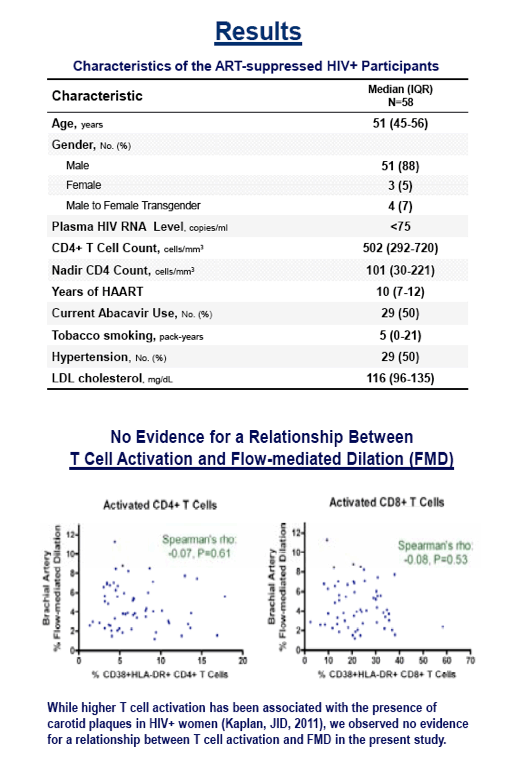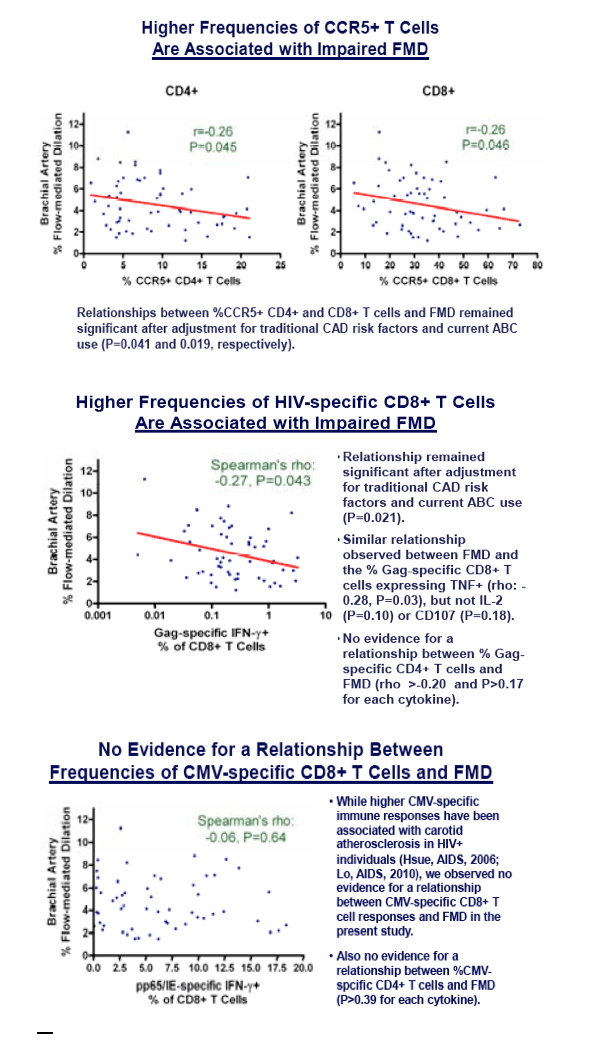 |
 |
 |
| |
Impaired Endothelial Function Is Associated with Increased Frequencies of CCR5+ and HIV-specific T cells During Treated HIV Infection
|
| |
| |
Reported by Jules Levin
CROI 2011 Boston March 2
Peter W. Hunt, Elizabeth Sinclair, Lorrie Epling, Yuaner Wu, Van Selby, Kristinalisa Maka, Amanda Schnell, Jeffrey N. Martin,Steven G. Deeks, and Priscilla Y. Hsue University of California, San Francisco
During ART-mediated viral suppression, endothelial dysfunction is associated with:
Higher % CCR5+ CD4+ and CD8+ T cells

BACKGROUND
HIV is associated with an increased risk of cardiovascular disease, atherosclerosis, and endothelial dysfunction.
These risks improve but often do not normalize during suppressive antiretroviral therapy (ART).
While some of the immunologic correlates of cardiovascular events and atherosclerosis have been defined, very little is known about the immunologic correlates of endothelial dysfunction in this setting.
METHODS
Sampled HIV-infected participants maintaining plasma HIV RNA levels <75 copies/ml on antiretroviral therapy (ART) from the SCOPE cohort.
Assessed endothelial function via flow-mediated dilatation (FMD) of the brachial artery (see figure below).
Subjects required to refrain from EtOH, caffeine, tobacco smoking, illicit drug use, and vigorous exercise for at least 12 hours prior to study.
Brachial artery diameter measured at rest and during reactive hyperemia 60 seconds after an ischemic stimulus (5 minutes of blood pressure cuff inflation).
%FMD reported as the % increase in brachial artery diameter during reactive hyperemia relative to the baseline measurement.

Assessed % activated (CD38+HLA-DR+), CCR5+, CMV pp65/IE-specific, and HIV Gag-specific IFN-γ+ T cells in cryopreserved PBMC.
Adjustment for traditional cardiac risk factors (age, gender, FH CAD, DM, HTN, LDL level, smoking pack-years) and current abacavir use, was performed using linear regression.


|
| |
|
 |
 |
|
|